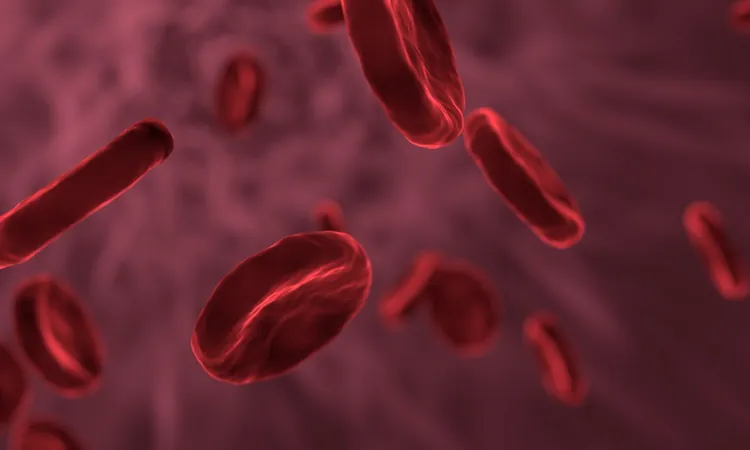
Groundbreaking Study Reveals How Faulty Cell Division Triggers Self-Destruction to Prevent Cancer
2024-10-30
Author: Arjun
Introduction
In an extraordinary glimpse into the microscopic world, researchers are uncovering the complex and miraculous processes that ensure human life continues. Each second, countless cells must divide accurately, replicating entire genomes and critical structures to produce two healthy daughter cells. This intricate cellular choreography is essential for the maintenance and health of complex organisms like humans.
The Role of Centrosomes
At the heart of this division process are centrosomes—tiny yet powerful protein structures that form opposing poles within the mother cell. These centrosomes generate long protein filaments known as the spindle apparatus, which are crucial for pulling duplicated chromosomes apart and ensuring an even distribution into the daughter cells. However, when this delicate process goes awry, catastrophic consequences can ensue. Cells may end up containing multiple centrosomes and an abnormal number of chromosomes, rendering them unfit and increasing their risk of turning cancerous.
Research Findings
Now, a team of researchers led by Andreas Villunger from CeMM in Vienna and Luca Fava from the University of Trento has shed light on how cells sense these errors and program themselves for destruction—a process known as apoptosis. Their research, published in *Science Advances*, reveals that the presence of multiple centrosomes activates a large protein complex named the PIDDosome, which plays a critical role in initiating cell death.
This PIDDosome activates caspase-2, an enzyme that triggers two pathways of destruction. First, it activates BID, a protein responsible for damaging the mitochondria, leading to apoptosis. Concurrently, caspase-2 also activates the renowned tumor suppressor p53, which engages additional pathways for cell death. This dual-action mechanism guarantees that cells with multiple centrosomes are eliminated, even when the individual pathways are inhibited.
Implications for Cancer Treatment
The implications of this study are significant, especially in the realm of cancer treatment. Tumor cells are notorious for their rapid and uncontrolled growth, often leading to the formation of multiple centrosomes. The findings of this research offer a promising avenue for enhancing current cancer therapies. By understanding the interplay between BID and caspase-2 activity within cancer cells, medical professionals could potentially identify which patients are most likely to benefit from drugs designed to disrupt faulty cell division.
Villunger emphasizes the potential for translating these findings into clinical practice, stating, “By analyzing the BID and caspase-2 activity in cancer cells, we could identify patients likely to respond positively to division-inhibiting treatments.” Fava further highlights the importance of deepening our understanding of the mechanisms behind existing drugs to improve their effectiveness and reduce invasiveness.
Conclusion
As researchers continue to unearth the complexities of cellular behavior, this study not only enhances our comprehension of cell division and apoptosis but opens the door to innovative strategies in cancer treatment. The race against cancer may soon leverage the very processes that are meant to protect us from it. With these promising insights, the future of cancer therapy looks increasingly bright.




 Brasil (PT)
Brasil (PT)
 Canada (EN)
Canada (EN)
 Chile (ES)
Chile (ES)
 España (ES)
España (ES)
 France (FR)
France (FR)
 Hong Kong (EN)
Hong Kong (EN)
 Italia (IT)
Italia (IT)
 日本 (JA)
日本 (JA)
 Magyarország (HU)
Magyarország (HU)
 Norge (NO)
Norge (NO)
 Polska (PL)
Polska (PL)
 Schweiz (DE)
Schweiz (DE)
 Singapore (EN)
Singapore (EN)
 Sverige (SV)
Sverige (SV)
 Suomi (FI)
Suomi (FI)
 Türkiye (TR)
Türkiye (TR)